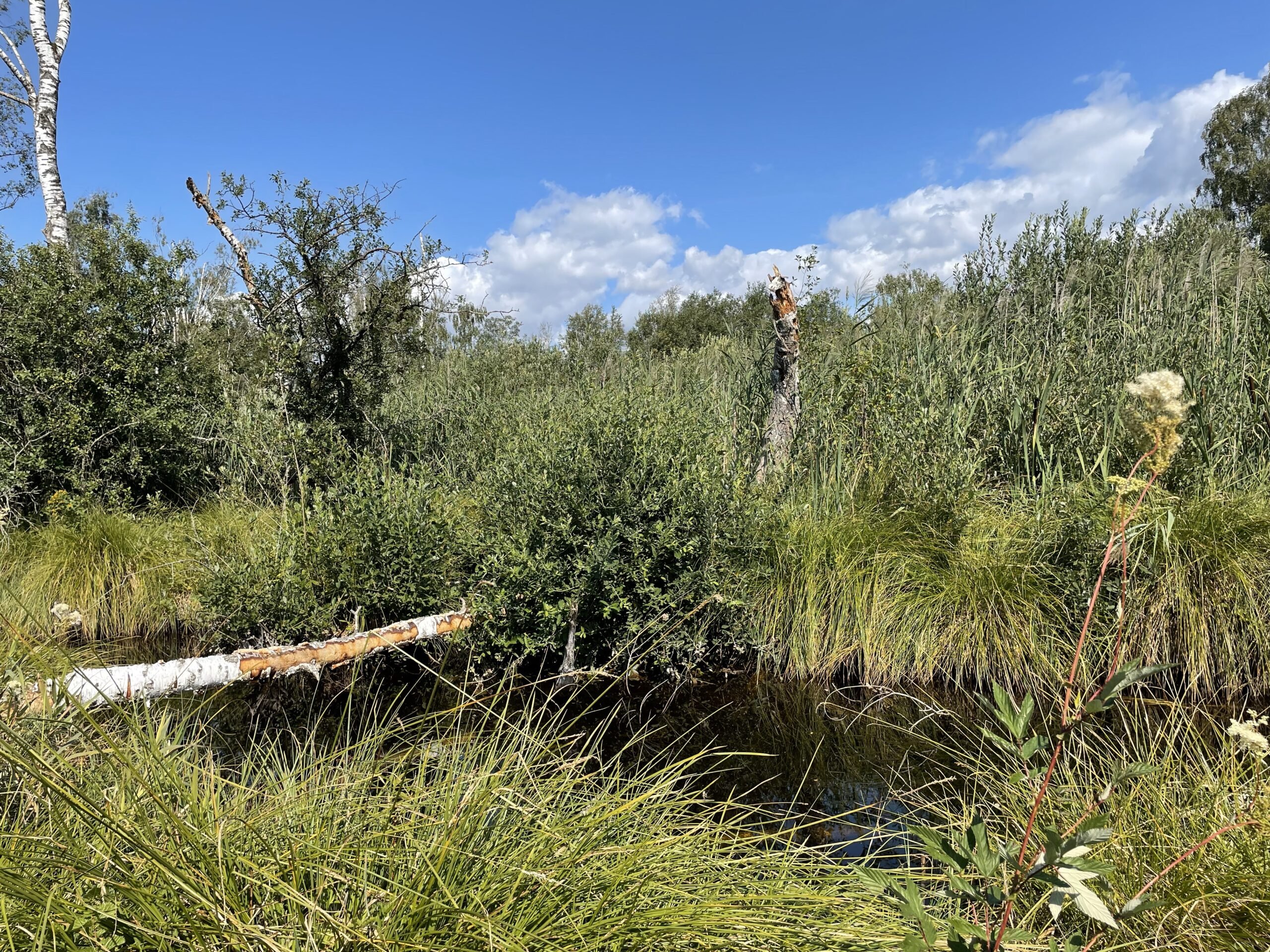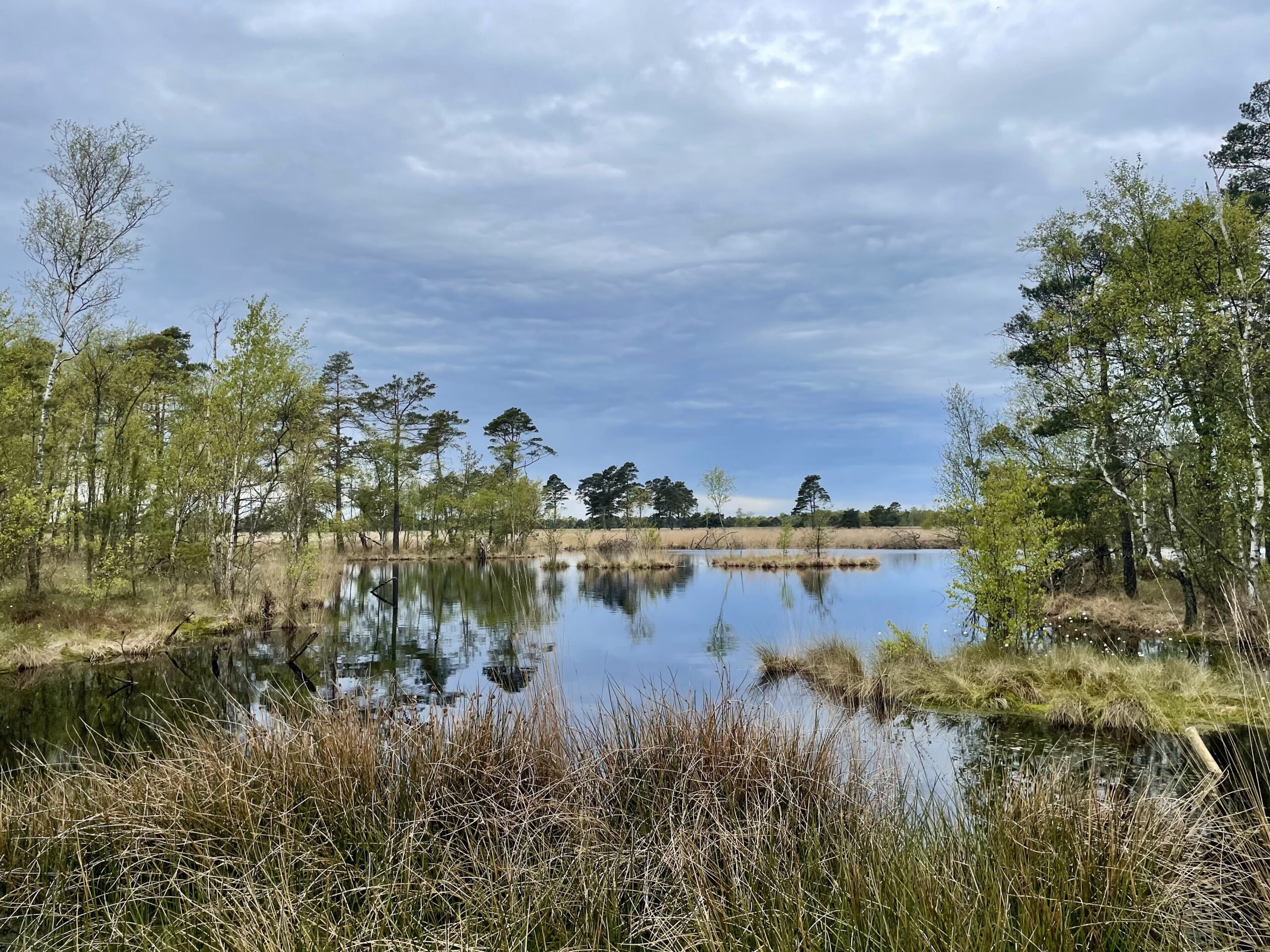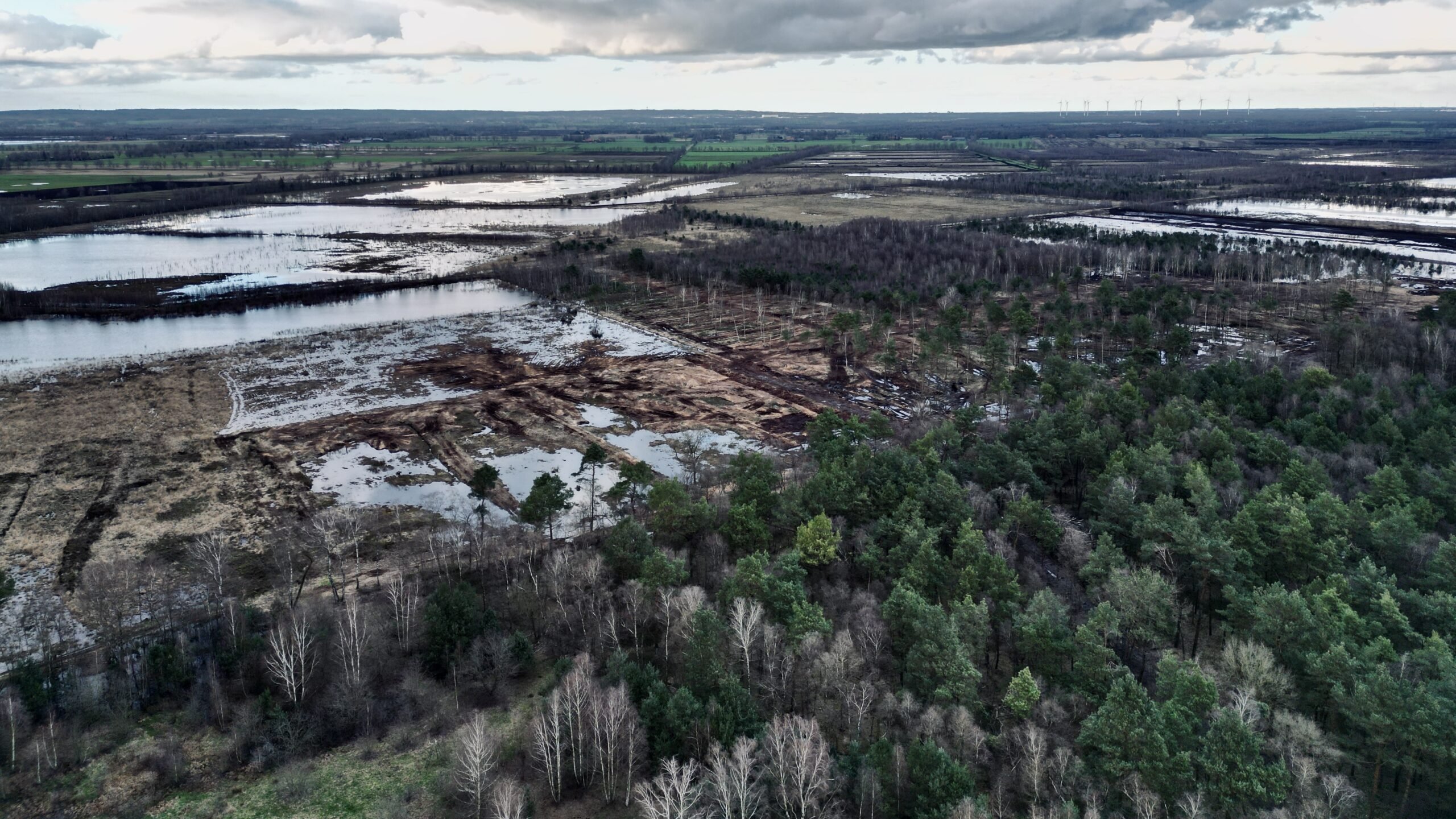Peatlands are permanently wet wetlands and combine life on land with life in the water, which makes them so unique. But how were peatlands created in the first place and what came first – the land or the water? In this article you will find out what the last ice age has to do with the formation of the peatlands of northern Germany and what the difference is between a raised bog and a fen. Because not all peatlands are the same.
Formation of the peatlands of northern Germany

Peatlands are relics of the Ice Age, which ended around 12,000 years ago. As a result of warmer temperatures, huge masses of ice melted and the meltwater flowing off collected in depressions and hollows. Over time, plants such as reeds, marsh grass and sedges began to colonize the shores of these lakes. With increasing plant growth, the shore expanded further and the lake silted up. This gradually created a marshy environment known as fenland. Under the nutrient-poor and waterlogged conditions, the plants could not be completely decomposed. Over the centuries, the dead plant remains accumulated and formed peat millimeter by millimeter. Raised bogs developed later from the fens by thickening the peat layer over time and trapping the water underneath. In some cases, access to the groundwater is completely interrupted. The surface of the bog rises and favors the growth of plants such as peat mosses, which are typical of raised bogs.
What is a raised bog?

Raised bogs are also known as rain bogs, as they draw their water sources mainly from precipitation. Rainwater brings hardly any nutrients with it, which is why nutrient-poor and acidic conditions prevail in raised bogs. Only a few, but particularly specialized species feel at home here. For example, the small, delicate peat mosses, brush-shaped cotton grasses and even carnivorous sundew species, which leave splashes of red color in the rather monotonous brown landscape.
What is a fen?

Fens often form in depressions and are fed by rivers or groundwater. They usually have a higher nutrient content due to the regular supply of sediments and minerals from the surrounding groundwater. Fens are particularly rich in species and colorful. Flowering orchids, magnificent bulrushes and bushy sedges can be found here.

Every peatland is unique and each one is worth protecting. Join our mission now to protect these unique ecosystems. Your support helps us to renaturalize our native moors and restore their vital functions such as carbon storage, water storage and water filtration.






